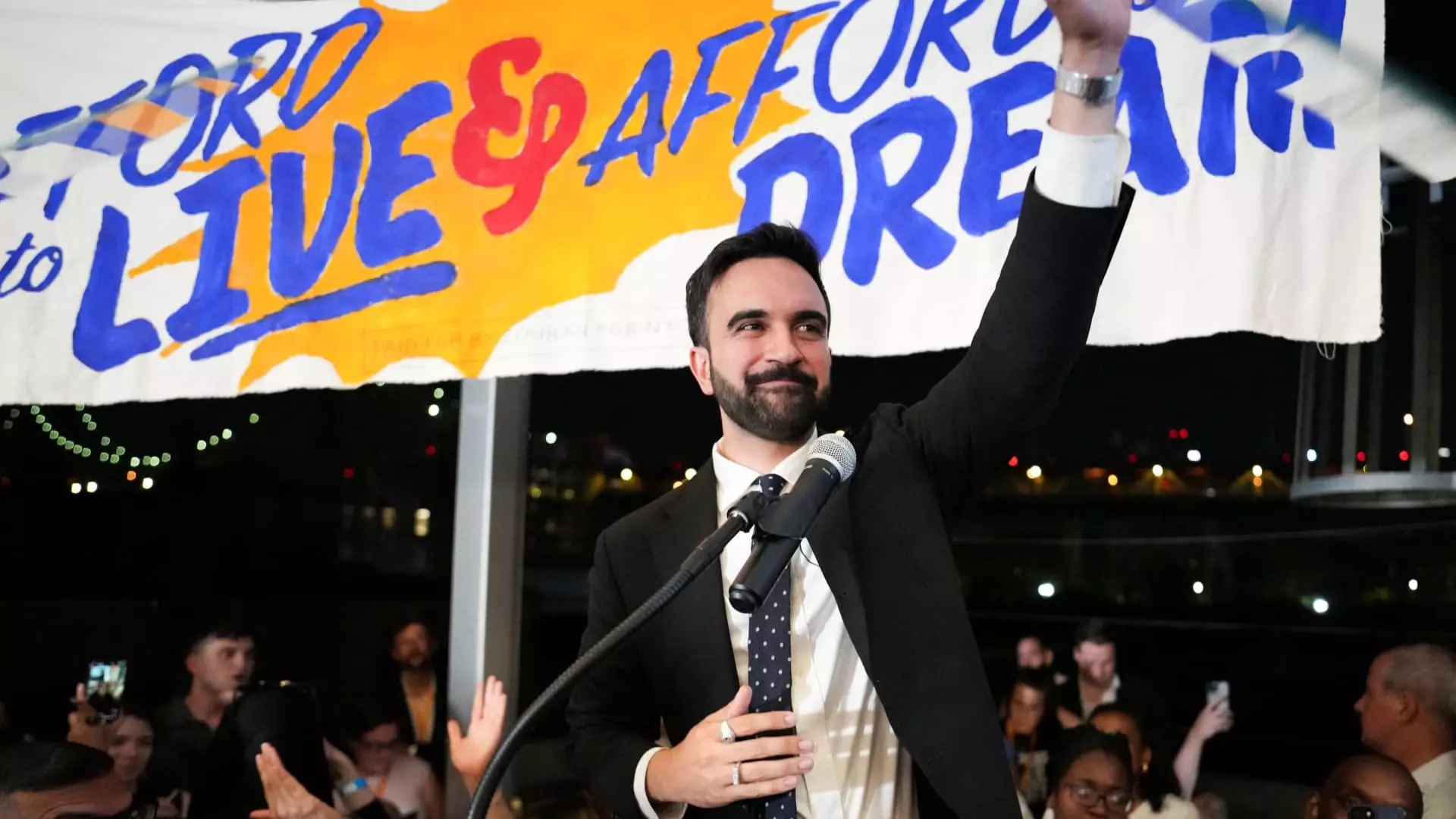In recent dialogues surrounding New York City’s political landscape, a recurring narrative has emerged: the fear that implementing higher taxes on the wealthy will ignite a mass exodus of the city’s richest residents. Critics warn of an impending “wealth flight,” arguing that the city’s ultra-rich will abandon the skyline, leaving behind a skeleton of its former affluent self. However, this view is overly simplistic and dismisses the myriad factors that sustain New York’s economic vitality. While some high-net-worth individuals might consider relocating to neighboring states or other tax-friendly locales, the assumption that a few policy changes will unravel the city’s financial fabric underestimates its resilience.
The data, often cited by opponents of progressive taxation, presents a distorted picture. The migration of a handful of billionaires and media coverage of their relocations do not accurately measure the flow of wealth across the entire spectrum of high earners. Wealth migration is nuanced; significant numbers of millionaires remain enticed by New York’s unparalleled cultural allure, its robust financial sector, and its status as a hub of innovation. The city’s reputation as a global capital of commerce and culture continues to draw the very individuals whose presence is mistakenly viewed as fragile — proof that complexity and inertia often defy simplistic economic arguments.
The Reality of a Rebounding and Growing Elite
Contrary to the narrative of fleeing billionaires, New York’s wealth base has demonstrated remarkable elasticity. Over the past decade, the number of millionaires in the city has more than doubled, illustrating a potent magnetism that cannot be easily overcome by superficial policy shifts. The recent proliferation of ultra-wealthy individuals—over 33,000 worth $30 million or more, more than double Miami’s count—underscores New York’s enduring appeal. Despite pandemic-era disruptions, the city continues to attract and cultivate wealth at an astounding rate.
This influx of wealth is driven not just by the financial industry but also by the city’s unparalleled luxury and lifestyle offerings. Prime real estate projects, luxury apartment sales, and high-end retail demand persist robustly. Contracts for multi-million-dollar apartments continue to surge, underscoring a deep-seated confidence in the city’s prestige. Real estate agencies report a strong appetite for high-priced properties—an indication that the ultra-wealthy still see New York as an unmatchable hub of luxury, culture, and opportunity. The perception of impending decline is thus more hype than reality; New York’s economic engine is animating rather than sputtering.
The Limitations of Tax-Focused Narratives
The argument that high taxes inevitably drive out the wealthy is rooted in a simplified view of economic behavior. Historically, the tax structure is only one of many factors influencing decisions to stay or leave. For instance, high earners in New York often choose to remain due to the city’s vibrant ecosystem of finance, technology, arts, and education sectors—sectors that offer unique opportunities unavailable elsewhere. Their decisions to relocate are more closely tied to lifestyle and opportunity than to marginal tax increases, especially when considering the available options, such as moving to affluent suburbs or neighboring states with similar or slightly lower tax burdens.
Furthermore, the claim that New York’s high earners are fleeing to states like Florida or Texas is valid but exaggerated when viewed in context. While some do move for tax reasons, the larger trend among the elite remains one of stability and reinvention within the city. The flow of talent and wealth continues to be replenished by newcomers and the ongoing rise of new industries. The idea that one policy shift will cause a collapse underestimates the city’s capacity for resilience; human capital, after all, is drawn by opportunity and reputation, factors that cannot be solely measured by tax rates.
The Larger Economic and Social Dynamics
Beyond the question of individual mobility, New York’s economic strength hinges on its ability to adapt and innovate amid changing circumstances. The city’s diverse economy—spanning finance, technology, media, and creative industries—acts as a bulwark against policy-induced instability. Even with potential adjustments in tax policy, the city’s infrastructure, educational institutions, and cultural attractions continue to serve as powerful anchors for wealth retention and attraction.
The challenge for policymakers is to balance fiscal needs with maintaining the city’s attractiveness as a place to live and work. While the notion of higher taxes might seem like a straightforward revenue-raising measure, its broader implications, such as public safety, quality of life, and social cohesion, are equally significant. A city that fosters a vibrant, safe, and inclusive environment will retain its appeal, regardless of marginal tax rate changes. Conversely, adopting policies solely rooted in punitive taxation risks undermining the city’s long-term vitality without significantly deterring wealth.
The True Cost of Wealth Flight: Myth or Reality?
The fear of losing our economic crown to lower-tax jurisdictions is rooted more in perception than in substantive reality. The high-net-worth population in New York is dynamic; it adapts to a range of stimuli, including policy, but remains fundamentally anchored by the city’s enduring assets. The narrative of hemorrhaging wealth is fueled by high-profile stories of billionaire relocations, which, while impactful for media, do not capture the nuanced demographics of wealth movement.
Moreover, the robust growth of the city’s middle and upper-middle classes, along with its capacity to generate new millionaires, indicates that the city’s economic system is far from fragile. It is a testament to the core strength of New York’s economic diversity and cultural richness. While targeted tax policies may prompt some to consider alternatives, they are unlikely to trigger an exodus of the sort that would destabilize the city’s financial standing in the long term.
Ultimately, casting New York as a fragile fortress on the verge of collapse oversimplifies its complex, resilient ecosystem. The city’s ability to reinvent itself, attract new wealth, and maintain its global status remains formidable. The real question is whether policymakers recognize the importance of nurturing a city that balances fiscal responsibility with the imperatives of growth, culture, and social stability—an equilibrium that ensures New York’s enduring allure for generations to come.

